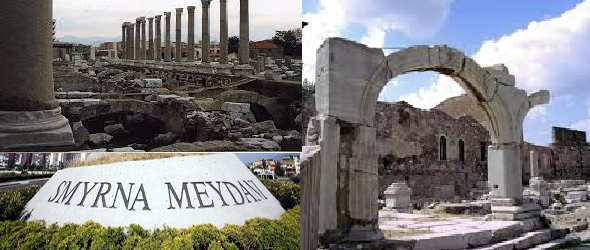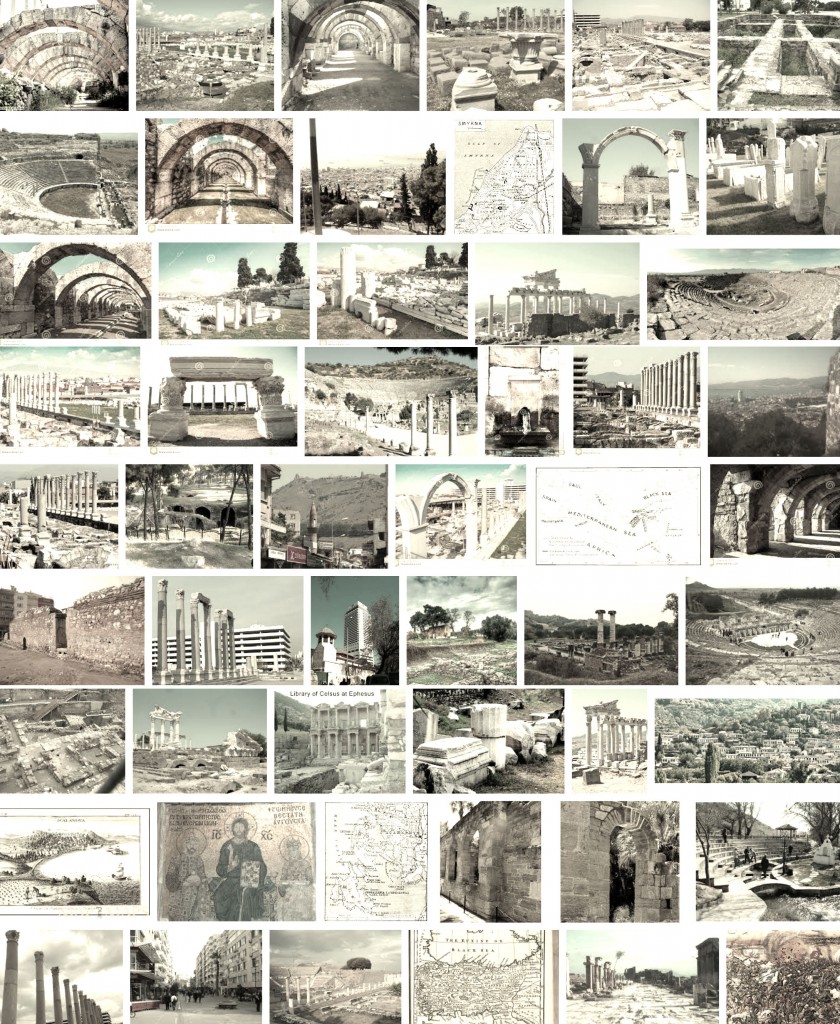Cozily situated in a well sheltered gulf on the indented coast of the Aegean Sea Izmir is the outlet of a rich area called Ege, the industrious population of which produces and processes Turkish tobacco, grapes (the world – famous sultanas), figs, cotton, olives, and olive oil for international markets.
Smyrna today is the modern city known as Izmir in Turkey
Izmir occupies first place in Turkey’s export industry, and after Istanbul, ranks as the second most important port of entry foi imports into Turkey.
Izmir has always had the reputation of being a beautiful city. A well-known French traveller, Pitton de Tourneront, who visited Turkey at the beginning of the eighteenth century.. Smyrna is one of the greatest and richest city.
The adequacy of its port, so necessary for commerce, has preserved it and inspired its reconstruction several times, after damage by earthquakes.
The situation of Smyrna is admirable. The city extends all along the coast, at the foot of a hill which dominates the harbor. There, the streets are wider, better paved, houses better built than those of the inland.
History of ancient city of Smyrna
The ancient city of Smyrna was founded on the other side of the gulf, near the place now called Bayraki, at the foot of another hill called Mount Sipylos, the abode of gods. Archaeologists put its founding as for back as the third millennium. B. C. Its is known as the birth place of Homer, who sang his famous poems on the shores of the sacred river Meles, of the rhetorician Aelius Aristeides, and of the famous Galen, physician of the Aesculapium of Pergamum. At Bayraklı in the middle of an ancient cemetery, still stands the mausoleum of Tantalus, the Phrygian king whom Jupiter condemned to the torture of eternal thirst.
Formerly an Aeolian city, it later became a member of the confederation of Ionian cities. Captured by Lydians and later on by Perso-Medians, it was reconquered by Alexander the Great, who entrusted his general and successor Lysimachus with the task of rebuilding the city on its present site.
At the beginning of the second Cenfiry B. C. Smyrna became a Roman city, remained under Byzantine domination till the fourteenth century. About the year 1320, Izmir fell into the hands of western Anatolian Turks, the Seljuk Princes of the Aydın Dynasty (Aydmoğullan), one of whom, Gazi Umur Bey used the city as a base to raid the eastern Mediterranean coast. In 1344, the Crusaders, encouraged by the Pope, raised a large fleet to recapture the city from Umur Bey. After a violent struggle the lower castle fell (28 October 1344). Umur Bey, who tried to take the castle baks with an inferior force, failed in his attempt and was killed in action.
Early in 1403, Tamerlane conquered the city after a short siege, and when he left Anatolia he gave it back to the Aydın Dynasty. In 1415, after a 10-day siege, Izmir was conquered by Mehmet I, and ever since has been a part of the Ottoman Empire. “Ephesus Tours”
Historical Sites and Monuments of Smyrna
Agora: The ancient Agora, in the quarter called Namazgah, is today the market place of Izmir. The remains to be seen there date from the Roman period (Second Century AD.).
Wails of Lysimachus: Kadifekale (The Velvet Castle) is the present name of the ancient Mount Pagus, which ovlerlooks the city. The walls and towers on the hill were originally built during the reign of Alexander the Great by his general and successor, Lysimachus. Traces of additional construction and repairs made during the Ottoman period are still noticeable. Kadifekale commands a breathtaking view of the tay of Izmir.
Aqueducts are in Kızılçullu over the Kemer (Me-les) river. They were built in the Byzantine and Ottoman periods to supply water to the city.
Archaeological Museum, in Kültürpark, houses precious relics, starting with the dawn of history, through the Greco – Roman era, down to the Seljuk and Ottoman civilizations.
Caravansarals : There are two such historic inns where caravans coming from the East used to find rest and food : Kızlar Ağası Hanı and Çakaloğlu Hanı, both dating from the eighteenth century. They are good specimens of Ottoman Turkish architectural art.
Mosques: Hisar Camii (1597), Şadırvan Camii (1636), Hacı Hüsmen Camii (1651), Kemeraltı Camii (1671) are good examples of Ottoman architecture.
A most prominent city of the ancient world, Smyrna,

